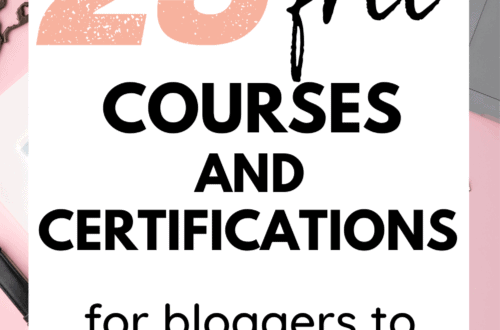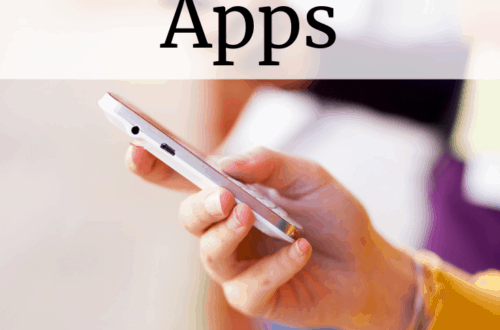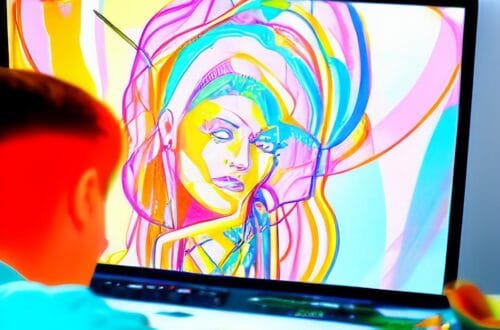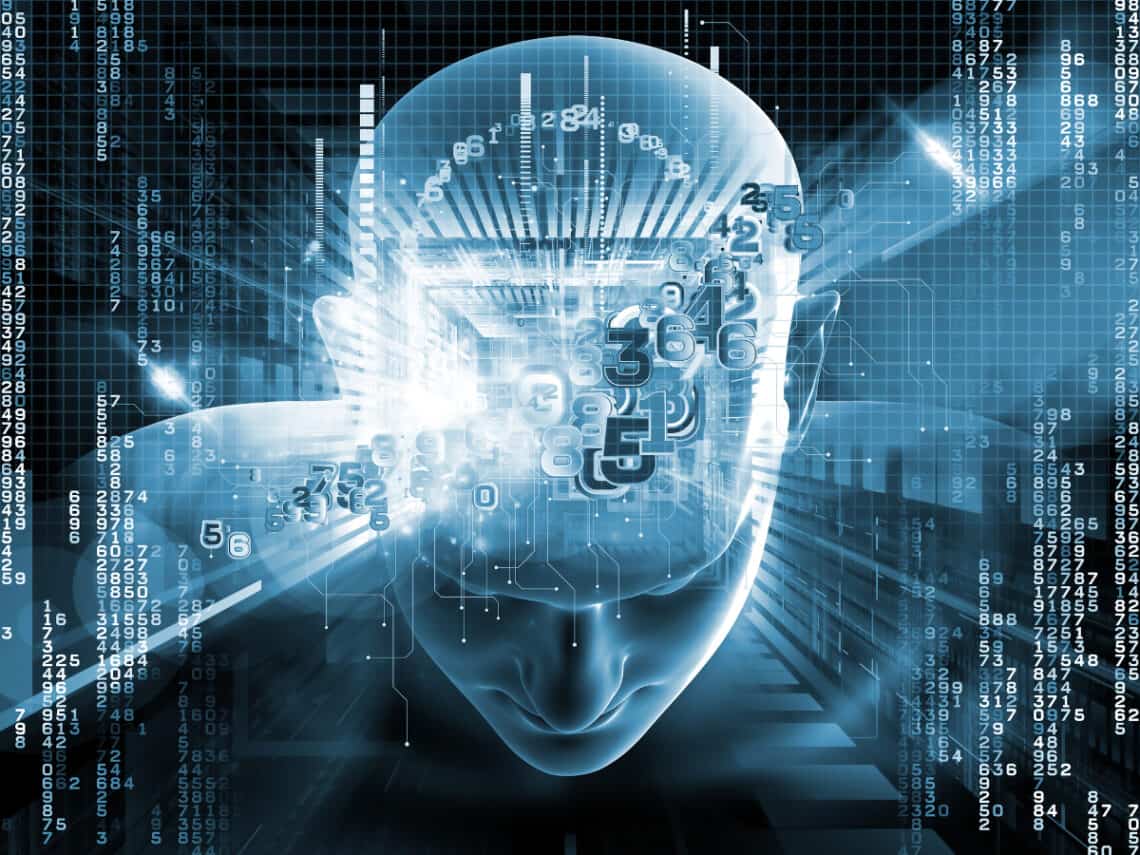
7 AI Trends You Should Know About (Gen AI Conference Recap)
The future of Artificial Intelligence (AI) is here, and as a blogger, entrepreneur, or just an everyday person that stumbled upon this article – that might be exciting, scary, or somewhere in between. AI has already been changing the way we live and work, but there are even more advancements coming in 2023 that could revolutionize how we interact with technology.
At the Gen AI Conference in February 2023, experts discussed some of the biggest topics and trends in generative AI (aka AI programs that can create some form of new content, from images to text to sound).
Here’s a recap of some of those key takeaways that we should be aware of moving forward…
1. AI will change the world.
Regardless of whether you want it to or not, AI is going to affect the world. We are on the precipice of major change, and every speaker seemed to allude to this. There are AI tools being deployed in everything from health care to journalism; from music production to nutrition apps. We have probably not even touched on the full capabilities of AI yet.
Dario Amodei, CEO of Anthropic, mentioned how he previously worked on building some of the GPT models at OpenAI. I believe he mentioned that he was surprised by some of the functions – like the ability to produce code – because that was something that wasn’t initially expected.
In other words, once an AI is trained, it may have additional capabilities that we didn’t even know it could help with!
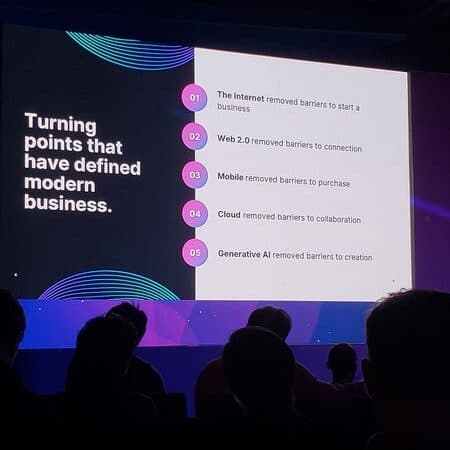
2. You can work to future-proof your job.
Kevin Roose gave a very interesting talk about how we can future proof our careers, given the expansion of AI.
He mentioned how for so long, we’ve given advice like “get a degree” or “do creative work” and that those assumptions would protect us from replacement.
However, AI surprised everyone when it came for white collar work (journalism, coding) and creative work (art, writing) – rather than the factory-type blue collar jobs many people expected.
Kevin talked about how we can future proof ourselves from AI replacement by focusing on three types of work:
- Surprising – This is work that AI can’t do because it’s irregular or physical. Think chefs or plumbers.
- Social – This is work that AI won’t do because it requires human connection or it’s experiential. For example, even though serving coffee could be automated, a barista is probably safe because people pay for the experience of going to a coffee shop.
- Scarce – This is work we won’t let an AI do because it’s high stakes with a low fault tolerance – or it’s something that we value for rare, observable excellence. For example, a 911 operator (high stakes/low fault) or an Olympic athlete (observable excellence).
What’s cool is that we can really apply these concepts to any industry or job. There are ways to make your own work more surprising, social, or scarce. It’s just about figuring out a creative way to do so.
This doesn’t mean you can’t use AI as part of your job; as said at the conference, we want to “use AI to enhance our humanity, not erase it.”
(PS – Kevin has a book called Futureproof that addresses these concepts!)
3. We’ll need to creatively address AI in education.
A lot of educators are trying to find ways of “fighting” AI, and the overall consensus on one of the panels was that this probably isn’t the ideal approach to take. Amjad Masad, CEO of Replit, mentioned that the “history of fighting technology hasn’t fared well”.
For example, let’s say you give a blanket statement and tell students not to use AI. Odds are some students will use it anyway. They can throw a few typos plus a few of their own words into a paper, and now an AI detector is unlikely to give a definitive answer of whether it was produced with AI.
That’s a practical difficulty. But perhaps more importantly, a blanket ban on using AI in education ignores the fact that AI will be a part of many industries. It doesn’t adequately prepare students for this reality.
Instead, it would be wonderful if innovative educators could figure out ways of integrating AI within guardrails. For example, could they teach about its use and limitations of its use? Could they have classroom discussions about the ethical implications of using AI for certain tasks?
One example mentioned was having students write a paper, but then letting the AI critique the paper – and having students assess if the critique was fair or accurate. I loved this idea!
You can also teach students about the limitations of AI, such as the fact that language learning models are not fact checkers. For example, a nutrition student needs to know the recommended ranges for protein intake before it asks an AI to write a paper on protein – otherwise there is no way they’d know if the information is accurate.
Teachers could also discuss differentiators like the “surprising, social, and scarce” concepts from Kevin’s talk, and apply these to different assignments as standalone work or in conjunction with an AI.
You can also enable students with ideas for how to use these models to help with ideation and creativity, which can enhance their abilities for entrepreneurship and unconventional roles later in life.
Overall, I think there is a lot of potential for incorporating education on AI in a positive way.
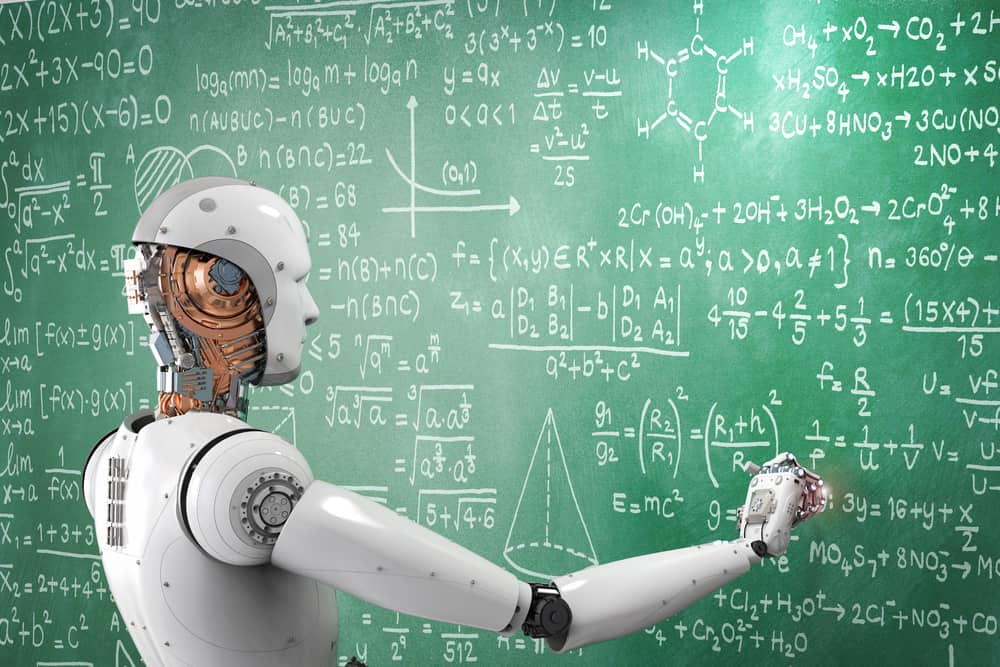
4. AI models will continue to evolve.
As we move forward, we’re likely to see more AI models in many aspects of life – from language to art, sound to video. Some of the discussions talked about a few of the trends we may see:
- More open source models available
- Hardware that enables larger models to be trained
- Smaller and more efficient models for very specific niche tasks
- Speed continuing to be an important for the end user
- We’re going to have “leapfrog” effects of models, scaling, and improvement – companies will need to consistently improve
Another thought that I found really interesting came from Nat Friedman, former CEO of GitHub. He mentioned how a lot of people think AI needs to be super accurate or people won’t use it. But he gave a competing view, which is that AI is kind of like a slot machine – it’s not always right but the fun and “random reward” nature where it comes up with right answers some of the time may outweigh the need for 100% accuracy.
(Obviously this only applies in certain circumstances, but I thought it was an interesting concept, given the upcoming AI chatbot wars between Google and Bing).
5. You can use AI to help enhance creativity.
Much of what I learned about creativity was from Zach King’s talk. King is a well-known digital video creator. He talked about how him and his team use AI to enhance the creative process (whether that’s for building a personal or business brand).
For example, AI can be used to help generate lists of ideas in the creative process. Let’s say you are trying to come up with some clever ideas for a TikTok video. You can prompt an AI with “Give me 25 ideas for _______”. King gave a great idea about how you can edit these prompts to be more specific for video, such as using modifiers like “most visual”.
He also mentioned how his team uses a one-pager that has a title, short description of the video idea, and an image of what they imagine the video might look like (in one part). With AI art, they can use that to generate those images to enhance the one-pager.
This is a brilliant idea for story boarding or creative visuals when you are putting together brand proposals for sponsored social or sponsored blog content. Make it come to life ahead of time so they can see it!
There are so many additional use cases with AI and creativity – you can find some of them over in my posts about ChatGPT for bloggers and artificial intelligence in general for blogging.
6. AI will help people with medical conditions create content
Dave Rogenmoser, Jasper CEO and Co-Founder, told a really powerful story about Jim Nightingayle (over at The Jasper Whisperer).
Jim was attacked outside a supermarket one night, which left him with aphasia. As Jim re-taught himself the complexities of language, AI became a helpful tool in his toolbox.
I hear a lot of fear tossed around about AI tools – things like “What if we all become dumber?” or “These tools are just making society lazier.”
Jim’s story is an excellent example of how AI can really enhance humanity; how it can give power to those with aphasia or other medical conditions to be able to create.
The same can be said for AI art. Picture someone with a neurological disorder that makes them unable to paint with a steady hand anymore. They can use text prompts for the type of art they’d like to “paint” in AI, and be able to embrace that creative outlet again.
7. Google and Bing will face off in an AI battle
You’ve seen the headlines recently, so you know that Google and Bing will be going head-to-head in the AI battle.
Bing has already released their version to some users, albeit with some unpredictable results (i.e. insulting some users and telling them it’s not 2023, haha). Google released a promo version for their chatbot, which caused a dip in stock shares when it showcased an inaccurate answer.
But the battle royale has commenced, and it will be interesting to see how this plays out over time. Google certainly has to deal with the economics of search more than Bing, so I’m personally interested to see what will result from it.
The Bottom Line
AI is certainly an exciting, somewhat concerning, and rapidly evolving technology. With any major technological advance, there will need to be adaptation and iteration, but the potential is incredibly powerful. Whether it be AI art enhancing creativity or AI helping you run your small business better, it will be fascinating to see the continued evolution over the next couple years.
Note: I tried to take excellent notes at the event, but if I’ve attributed a statement to the wrong panelist, please feel free to reach out. 🙂


